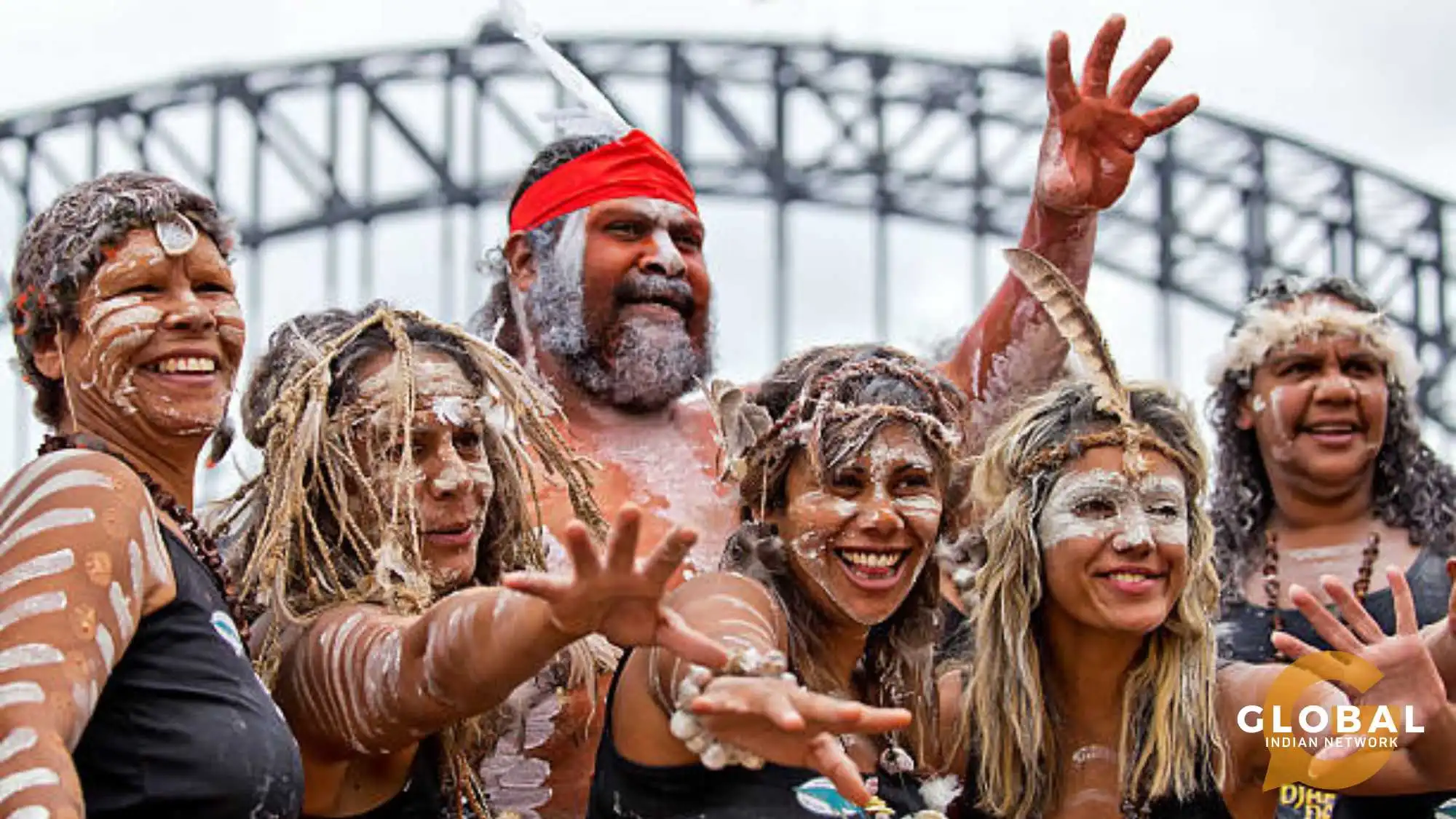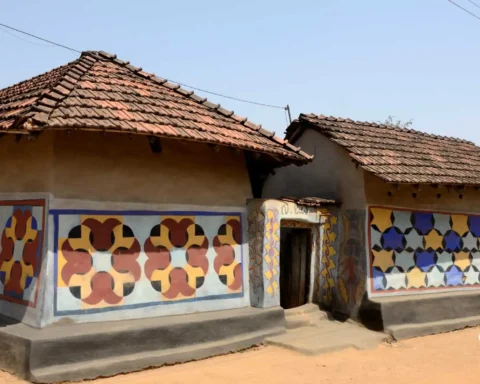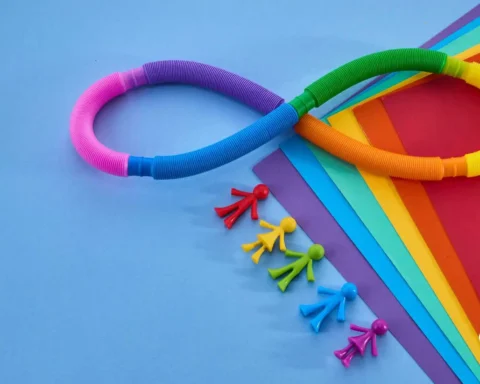Art has always been integral to Aboriginal people and their culture, representing their deep connection with the land and spiritual beliefs. For thousands of years, Aboriginal people have used art as a means of storytelling, passing down their knowledge and traditions to the next generation. Today, Aboriginal art is not only a vital component of their cultural identity but also an essential contributor to the Australian art scene, with the industry estimated to be worth around $500 million annually. In this article, we will explore the cultural significance of art in Aboriginal culture and how it has evolved over time.
Table of Contents
Definition of Aboriginal Art
Aboriginal art refers to the art created by Indigenous Australians, primarily from the continent of Australia. It is one of the oldest art forms in the world, dating back over 60,000 years. Aboriginal art is a diverse and complex form of art that includes a wide range of styles, techniques, and mediums. It often incorporates symbols and patterns that represent the Dreamtime stories, spiritual beliefs, and cultural practices of Indigenous Australians. Aboriginal art is an important aspect of their cultural identity, and it serves as a means of preserving and passing down their knowledge and traditions to future generations.
The Significance of Art in Aboriginal Culture: A Brief History
The history of Aboriginal art spans tens of thousands of years, with evidence of rock art and cave paintings dating back to the Paleolithic era. These ancient artworks depict a range of subjects, including animals, people, and spiritual beings, and were created using natural pigments and materials. Aboriginal art continued to evolve over time, with new techniques and styles emerging as the Indigenous Australians adapted to changes in their environment and culture.
With the arrival of European settlers in the 18th century, Aboriginal art faced significant challenges, including the loss of traditional materials and the suppression of Indigenous culture. However, Aboriginal art persisted, and in the 20th century, it began to gain recognition as a significant and valuable form of art. Today, Aboriginal art is celebrated both in Australia and around the world for its cultural and artistic significance.
The Significance of Culture in Aboriginal Art
Aboriginal art is more than just a form of creative expression; it is an integral part of Indigenous Australian culture. The significance of culture in Aboriginal art is reflected in the various themes and motifs used in the artwork. Aboriginal artists draw inspiration from their cultural traditions, beliefs, and spirituality and use their art to communicate important cultural messages. For Indigenous Australians, art is a way to express their identity and connection to their cultural heritage, and it plays a vital role in preserving and passing down their traditions to future generations. In this way, Aboriginal art serves as a powerful medium for celebrating and maintaining the unique culture and identity of Indigenous Australians.
Spirituality and Dreamtime Stories
Spirituality and Dreamtime stories are central to Indigenous Australian culture, and these themes are reflected in their art. Dreamtime stories are a significant part of Aboriginal culture, and they are believed to explain the creation of the world and the relationship between humans, nature, and the spiritual realm. Aboriginal art often depicts these ancient stories through intricate designs and symbols holding deep cultural and spiritual significance.
The creation of Aboriginal art is also often accompanied by rituals and ceremonies, which are intended to connect the artist to their ancestors and the spiritual world. Through their art, remote communities not only express their spirituality and cultural beliefs but also maintain a strong connection to their ancestors and traditional ways of life.
Connection to the Land and Nature
The connection between Aboriginal people and the land is essential to Indigenous communities, which is evident in their art. Aboriginal art often portrays the natural environment, including the animals, plants, and landscapes that are significant to their culture. These artworks are often created using natural materials such as ochre, charcoal, and bark sourced from the land. Creating art is also seen as a way of connecting with the land, as it is believed to channel the energy and spirit of the environment. For Indigenous Australians, their art serves as a powerful reminder of their connection to the land and the importance of preserving it for future generations.
Preserving Cultural Heritage
Preserving cultural heritage is a vital component of Aboriginal art. Indigenous Australians have passed down their traditional culture and stories through art for thousands of years. The artworks act as a visual representation of their cultural identity and serve as a way of preserving their history for future generations. Today, many Indigenous Australian artists continue to create artworks deeply rooted in their cultural heritage while exploring new forms and techniques. These artists play a crucial role in preserving their cultural heritage and raising awareness about the significance of Indigenous Australian art and culture. The art these indigenous artists created is beautiful and serves as an essential cultural and historical record.
Passing Down Knowledge and Traditions
Passing Aboriginal knowledge and traditions is a central aspect of Aboriginal culture, which is evident in their art. Aboriginal art is often used as a medium for storytelling and passing down traditional knowledge and customs. Through their art, Indigenous people are able to share their cultural heritage, including their beliefs, values, and experiences, with future generations.
The use of symbols and patterns in Aboriginal artwork is a way of encoding information and passing down knowledge in a visual format. The act of creating art also provides an opportunity for elders to teach younger generations about their culture and traditions. Aboriginal art is a powerful tool for preserving and passing down cultural knowledge and traditions, and it continues to play a significant role in Indigenous Australian culture today.
Types of Aboriginal Art
The Aboriginal art form is a diverse and multifaceted genre encompassing various mediums and styles. Each type of Aboriginal painting has its own unique history and significance, reflecting the rich ancient culture of Aboriginal communities.
Dot painting is perhaps the most widely recognised style of Aboriginal art. This technique involves creating intricate patterns of dots using a variety of colours, which can represent various things, such as stars, animals, or significant cultural sites. Dot painting is often used to tell stories and convey important cultural and spiritual messages.
Bark painting is another important form of Aboriginal art. This technique involves painting on the inner bark of trees, using natural pigments and ochres to create intricate designs and patterns. Bark painting often depicts important stories and cultural traditions, such as hunting and gathering practices or spiritual beliefs.
Rock paintings are yet another type of Aboriginal art, which involves creating designs on rocks and cave walls using various materials such as charcoal, ochre, and clay. Ancient rock paintings can include depictions of animals, people, and other important cultural symbols and are often used to tell stories and convey important cultural messages.
Sand painting is a lesser-known form of Aboriginal art that involves creating intricate patterns and designs in sand, often used in religious or ceremonial contexts. The designs are created by hand using various natural materials such as sand, ochre, and charcoal and can represent important cultural symbols and spiritual beliefs.
YOU MIGHT BE INTERESTED IN: From South Africa to India: A Gripping Cross-Cultural Narrative with Dr Aman Singh Maharaj
Evolution of Aboriginal Art
The evolution of Aboriginal art has seen a significant transformation from traditional to modern forms. The traditional art forms are the ones that have been practised for centuries and were primarily created for ceremonial purposes, such as rock and cave paintings, sand paintings, and ceremonial body paintings. With the impact of colonisation, traditional Aboriginal art forms were banned, and the creation of modern art forms emerged. Modern Aboriginal art forms included paintings on canvas, sculptures, and prints and were influenced by Western culture and their art styles.
The contemporary Aboriginal art scene is a reflection of both traditional and modern art forms. It is an ever-evolving field that embraces new technologies and mediums while retaining traditional cultural elements. Contemporary paintings have become a significant part of the Australian art industry, with works displayed in galleries and museums worldwide. Despite the impact of colonisation, the evolution of Aboriginal art has allowed the continuation of traditional art forms and the emergence of new ones that showcase the richness of Aboriginal culture.
Significance of Aboriginal Art Today
Aboriginal art holds a significant place in the contemporary world as a means of cultural expression and preservation. It not only contributes to the cultural identity of Aboriginal communities but also generates economic benefits, promotes educational and social values, and fosters reconciliation and understanding between Indigenous and non-Indigenous people.
Economic Impact
Aboriginal art has significant economic benefits on both local and national levels. The demand for authentic Aboriginal art has increased in recent years, leading to increased prices and the creation of a thriving art market. Many Aboriginal artists can now make a living from their art, which has helped to support their communities and families.
Cultural Identity
Aboriginal art plays a crucial role in preserving and expressing cultural identity. Aboriginal artists can connect with their ancestral heritage through their artwork and convey their stories, beliefs, and traditions to future generations. Aboriginal art serves as a powerful reminder of the rich and diverse cultural history of Indigenous people in Australia.
Educational and Social Value
Aboriginal art has significant educational and social value. It can be used to promote cross-cultural understanding and appreciation of Indigenous cultures. Many educational institutions, museums, and galleries display Aboriginal art to teach the public about the history, culture, and perspectives of Aboriginal people. Additionally, Aboriginal art can be used in therapeutic settings to promote healing and well-being.
Promoting Reconciliation and Understanding
Aboriginal art can be a powerful tool for promoting reconciliation and understanding between Indigenous and non-Indigenous people. Aboriginal artists can share their experiences and perspectives, challenge stereotypes and misconceptions, and foster mutual respect and understanding through their artwork. We can promote a more inclusive and equitable society by recognising and supporting Aboriginal art.
Conclusion
The significance of art in Aboriginal culture cannot be overstated. Aboriginal art is not just a means of self-expression, but it also represents the cultural heritage and identity of the Aboriginal people. From traditional art forms to contemporary art styles, Aboriginal art has evolved over the years but still holds a crucial place in today's world. The economic impact, cultural identity, educational and social value, and promotion of reconciliation and understanding are some of the ways in which Aboriginal art continues to be significant today. It is essential to preserve and promote Aboriginal art and culture to honour the rich history and heritage of Australia's First Nations people.
FAQs
What is in Aboriginal culture?
Aboriginal culture is a diverse and complex set of traditions, beliefs, and practices shaped by thousands of years of history and the unique environments of different regions across Australia. It encompasses art, language, spirituality, storytelling, song, dance, and a deep connection to the land and its natural resources.
What does the Aboriginal culture believe in?
Aboriginal cultures have a wide range of beliefs and practices, but generally, they emphasise the interconnectedness of all things in the universe, including the land, animals, and people. They also believe in maintaining a deep spiritual connection to their ancestral lands and the natural world.
How old is Aboriginal culture?
The Aboriginal culture is estimated to be at least 60,000 years old, making it one of the oldest continuous cultures in the world.











[…] peoples, often referred to as "indigenous" or "aboriginal" peoples, are the original inhabitants of a specific geographic region or territory, typically […]
[…] with stars like Sally Rand and Blaze Starr becoming household names. However, by the 1950s, the art form had begun to decline, overshadowed by the rise of television and changing social mores. It […]
[…] is for art lovers out there! We're about to dive into the world of some seriously jaw-dropping sculptures. […]